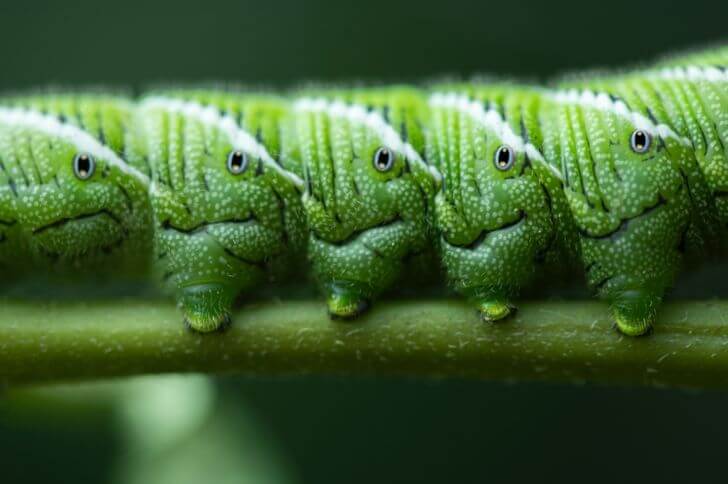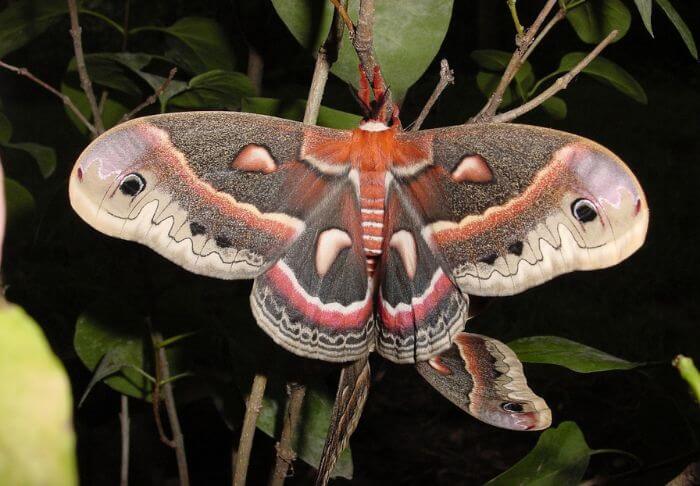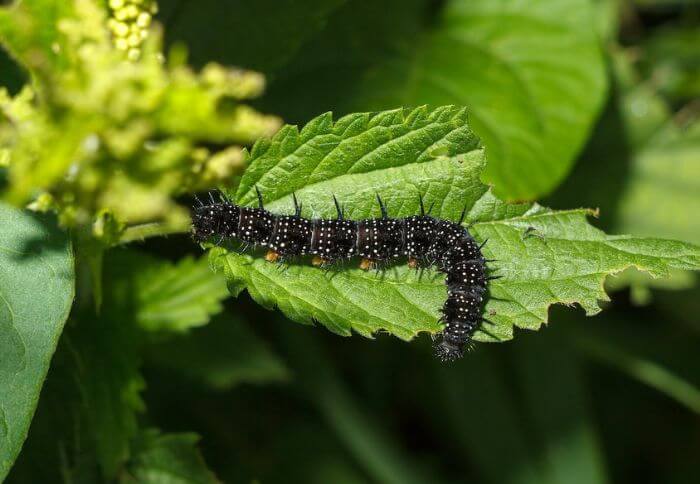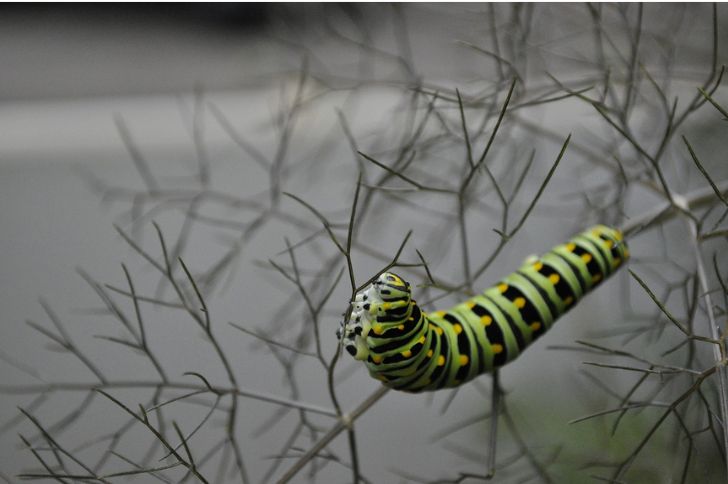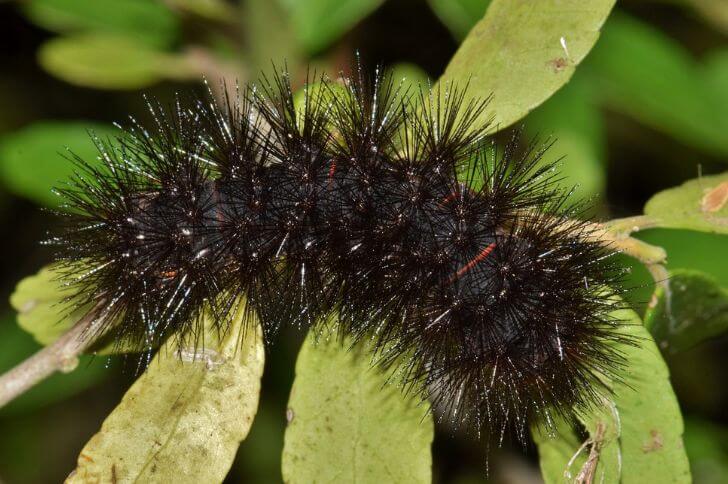3 Interesting Caterpillars with White Spikes
In the vast realm of insects, where colors and patterns often serve as survival strategies or mating signals, there exists a peculiar caterpillar that defies these conventions with its startling appearance – adorned with striking white spikes.
This audacious fashion statement is not simply for show; it holds clues to the mysteries surrounding this elusive species.
As we delve into their world, we will uncover their unique adaptation techniques, unravel their evolutionary history, and learn why they have become living works of art in nature’s grand gallery. Brace yourself for an enthralling journey through the twists and turns of these captivating caterpillars with white spikes!
Caterpillars with white spikes
1. Black Slug Cup Moth Caterpillar
The black slug cup moth caterpillar might seem unassuming at first glance, with its small size and plain black color. But don’t let its appearance fool you; this caterpillar is a master of deception.
When threatened, it has a remarkable ability to curl up into itself and resemble a tiny black slug. This clever defense mechanism helps the caterpillar blend seamlessly into the background, evading predators that may mistake it for something entirely different.
Another striking feature of the black slug cup moth caterpillar is its white spikes. Positioned along both sides of its body, these spikes serve two important purposes.
Firstly, they act as a deterrent to predators by making the caterpillar appear larger and more dangerous than it actually is. Secondly, they serve as chemical receptors, allowing the caterpillar to sense changes in its environment and react accordingly.
But beyond their defensive adaptations, these little creatures also play important roles in their ecosystems as herbivores.
Feeding on various plant species, they help maintain balance by controlling vegetation growth and providing food for other organisms further up the food chain.
So next time you see a plain-looking black slug cup moth caterpillar in your garden or out on a nature walk, take a moment to appreciate just how fascinating and integral these seemingly insignificant insects can be.
2. Milkweed Tussock Moth Caterpillar
One of the most visually striking caterpillars you may come across is the Milkweed tussock moth caterpillar. With its vibrant colors and unique appearance, it’s hard to miss this fascinating creature.
The caterpillar’s body is covered in tufts of long, white hairs, giving it a spiky appearance that serves as a defense mechanism against predators. These spikes are actually venomous – they contain chemicals that can irritate the skin and cause a burning sensation if touched.
Not only does the Milkweed tussock moth caterpillar possess an eye-catching exterior, but it also has an interesting lifestyle. As its name suggests, this caterpillar feeds exclusively on milkweed plants.
Interestingly enough, while most animals avoid consuming milkweed due to its toxic properties, these caterpillars have adapted to not only tolerate but thrive on its chemical defenses. By sequestering these toxins in their own bodies, they become unpalatable to predators and gain protection from potential threats.
Observing a Milkweed tussock moth caterpillar can be an enchanting experience for nature enthusiasts.
Its vibrant colors demand attention while simultaneously warning predators of its toxic nature through venomous spikes. This unique adaptation showcases how certain species have evolved creative ways to coexist with plants that would otherwise be harmful or even deadly to other creatures.
3. Cabbage Tree Emperor Moth Caterpillar

source: collectiveofanimals
Nestled among the lush foliage of tropical Africa, the cabbage tree emperor moth caterpillar is a creature that truly commands attention. With its vibrant green body adorned with bold white spikes, this caterpillar appears more like an extraterrestrial creation than a mere insect.
As it goes through its metamorphosis, transforming into a beautiful moth, one cannot help but marvel at the intricate patterns and colors that nature has bestowed upon it.
Beyond its striking appearance, the cabbage tree emperor moth caterpillar plays a vital role in maintaining the ecological balance of its habitat.
By feeding on the leaves of various plants and shrubs, it aids in controlling their growth while providing nourishment for itself. Furthermore, this remarkable creature has adapted to blend seamlessly with its surroundings – an ingenious survival strategy against predators.
Observing the life cycle of these unique caterpillars offers us not only a glimpse into the wonders of nature but also an opportunity to reflect on our own existence.
Like them, we too undergo transformations throughout our lives, shedding old perspectives and beliefs as we grow into new versions of ourselves. Perhaps there are lessons to be learned from these humble creatures about embracing change and finding beauty in unexpected places.
FAQs
Can you touch the milkweed tussock moth?
Can you touch this caterpillar with white spikes? Well, while it may be tempting to reach out and feel those cute white spikes, it’s important to exercise caution. The hairs of the milkweed tussock moth caterpillar are not as harmless as they appear.
These seemingly innocent-looking tufts actually serve as a defense mechanism for the caterpillar. Each hair is covered in venomous spines that can cause itching, irritation, or even an allergic reaction in some people. So while touching this caterpillar might seem harmless at first glance, it’s best to admire its beauty from a safe distance.
If you do happen to touch a milkweed tussock moth caterpillar by accident, don’t panic. Simply wash your hands thoroughly with soap and water and avoid rubbing your eyes or any sensitive areas of your body.
It’s always better to err on the side of caution when interacting with these captivating creatures of nature – unless, of course, you’re equipped with gloves or other protective gear!
Should I get rid of milkweed tussock moth caterpillars?
While it may be tempting to get rid of milkweed tussock moth caterpillars due to their intimidating appearance, there are several reasons why you should reconsider. Firstly, these caterpillars play a crucial role in maintaining the ecological balance of your garden or local environment.
They feed exclusively on milkweed plants, which is essential for the survival and reproduction of monarch butterflies. By removing these furry creatures, you could inadvertently disrupt this delicate cycle and hinder the growth and population of monarchs.
Additionally, milkweed tussock moth caterpillars are relatively harmless to humans and most animals. While they do possess venomous spines that can cause skin irritation if directly handled, they generally do not pose a significant threat.
Furthermore, these caterpillars undergo a stunning transformation from their peculiar larval stage into beautiful moths. By allowing them to complete their life cycle undisturbed, you have the opportunity to witness nature’s captivating process right in front of your eyes.
What do slug moths eat?
Most caterpillars feed on leaves, but the slug moth caterpillar is quite unique in its dietary preferences. Instead of chomping down on vegetation like its counterparts, this fascinating creature consumes another type of life form – lichens.
Lichens are a peculiar combination of fungi and algae working together symbiotically, providing the slug moth caterpillar with a nutritious and abundant food source.
What makes this feeding habit even more intriguing is that slug moth caterpillars have evolved to completely eliminate their need for water intake.
Unlike other insects that gain moisture from consuming plants or sources like dewdrops, these clever creatures obtain both water and nutrients from their specialized diet of lichens. This adaptation allows them to thrive in drier environments where other caterpillars struggle to survive.
What does a slug caterpillar turn into?
When you come across a caterpillar covered in white spikes, you may be looking at a slug caterpillar. These unique creatures are known for their striking appearance and can be found in various regions around the world. But have you ever wondered what exactly they turn into?
Contrary to their small and squishy appearance, slug caterpillars transform into beautiful moths. Yes, that’s right—this seemingly unassuming creature goes through a remarkable metamorphosis to become something quite extraordinary.
While the exact species of moth varies depending on the specific slug caterpillar, many of them end up as colorful and intricately patterned moths that can rival even the most vibrant butterflies.
The transformation from slug-like caterpillar to graceful moth involves several stages. Once the caterpillar has completed its feeding phase and reached maturity, it will enter the pupal stage inside a cocoon or chrysalis.
During this time, incredible changes occur within its body as it undergoes a complete restructuring process. After weeks or months of patiently waiting inside its protective casing, an adult moth emerges with delicate wings ready to take flight.
Knowing that these bizarre-looking creatures eventually become exquisite moths adds another layer of wonder to observing them in nature.
So next time you spot a caterpillar covered in white spikes—even though it may not seem like much at first glance—remember that hidden beneath its peculiar exterior lies the potential for true beauty to unfold before your eyes.
Passionate animal photographer with an unwavering love for capturing the essence and beauty of our furry friends.
With over five years of experience in the field, I have developed a unique ability to connect with animals on a deeper level, allowing me to create stunning and captivating images that truly reflect their personality.
Let’s collaborate to capture unforgettable moments that celebrate the unique bond between humans and animals!
